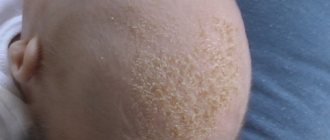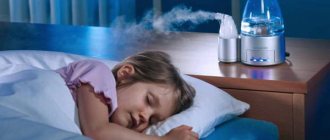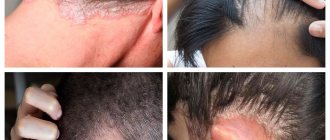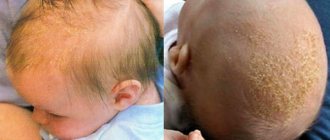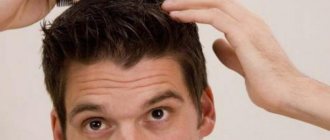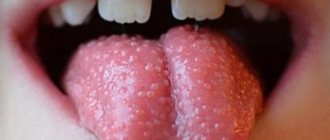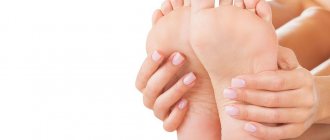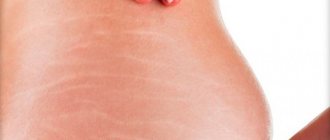05/27/2021 Reading time: 5 min 18205 0
By the end of the first month of life or a little later, yellowish crusty scales can be noticed on the baby’s scalp. They can frighten and upset a mother who is unprepared for such a phenomenon, but meanwhile there is nothing terrible about them. Milk crusts, which actually have nothing to do with milk, occur in many children under one year old. In medical terminology, they are called seborrheic dermatitis, physiological seborrhea or gneiss.
What are crusts on the head?
The crusts look like dense scaly growths on the child's head. Sometimes you may also notice redness or a rash. Crusts can form on the face (including the ears, eyelids and nose) and in the groin area. This is not a contagious condition and usually does not cause itching, pain or scarring.
The crusts can be confused with eczema or dandruff; the pediatrician will be able to accurately diagnose. Unlike eczema, crusts usually do not cause discomfort or itching.
Sometimes crusts on the head can appear in children older than 3 months, and in those who have already begun to walk. Usually the crusts persist for several months and then disappear on their own. In some cases, scabs may persist for a year or longer, and it may be necessary to use a medicated shampoo or cream.
What contributes to the growth of crusts
Although the process of crust formation is considered a natural process, as a result of improper manipulations by some parents, crusts can grow.
Causes:
- overheating of the child. Some mothers are so afraid of their baby catching a cold that they put a hat on him even in warm weather and, when this is not required, as a result of sweat, the crusts grow even more;
- frequent washing of the hair deprives the baby of the protective layer of skin, which also helps the crusts to grow;
- the use of bathing products that are not appropriate for the child, which causes allergies and increased formation of crusts;
- the baby's mother eating foods that cause allergies, or feeding the baby formulas that also cause allergies.
Why do crusts appear on the head?
The exact cause of scalp crusts is unknown, but experts do not attribute the appearance of crusts to allergies or poor hygiene. One factor may be the transfer of mother's hormones to the baby during pregnancy, which causes excess sebum to form in the sebaceous glands and hair follicles. Another factor may be a type of malassezia fungus that lives in the sebum along with bacteria.
Washing your baby's hair daily with a mild baby shampoo will help prevent crusting.
Yellow crusts, milky crusts in a newborn. Why are they formed?
Yellow crusts on the baby's head are formed due to age-related characteristics of the sebaceous glands. There are many of them on the head, and under the influence of maternal hormones, these glands actively produce a secretion - sebum. Drying together with exfoliated pieces of the epidermis - the upper layer of the skin - it forms unsightly yellowish crusts. Also, the formation of crusts can be influenced by Malassezia fungi, which live on human skin and feed on the secretions of the sebaceous glands. Since the secretion is produced in excess, the colonies of the fungus grow and there are more crusts. Sometimes they say that the cause of seborrheic dermatitis in infants is poor care or improper nutrition of the nursing mother, but this is a wrong opinion. True, the crusts can actually become larger if the baby’s room is hot and dry, if he is constantly wearing a cap or cap.
Mom needs to keep in mind that seborrheic dermatitis can appear not only on the child’s head, but also on other areas of the skin where the sebaceous glands are active: on the forehead, nose and chin, behind the ears, in the navel area and in the folds. Should they be removed? Milk crusts are a temporary age-related phenomenon. As a rule, by the age of one year they go away on their own. If there are no layers of crusts on the child’s head and the skin underneath is not inflamed, then it is not necessary to remove them. But do you have the patience to look at the ugly yellow formations on the skin of your wonderful baby and do nothing?
It is important!
My hands are just reaching out to pick it up a little, to remove this disgrace.
However, this should never be done! This can damage the baby's delicate skin and cause infection. Instead of the desired beauty, you will get health problems for the baby. If you decide to rid your baby of seborrheic dermatitis, do it in a safe way.
How to remove crusts on a child's head?
Thick crusts can be difficult to remove, try the recommended procedures:
- Once a day, when you bathe your baby, wash his hair with mild baby shampoo. Ask your pediatrician to recommend a shampoo for scalp crusts.
- Gently comb out the flakes with a comb or soft scalp brush and then rinse off the loose flakes with water. Do not rub or scratch your skin.
- You can also use baby oil or vegetable oil. Before combing out the scales, lubricate the child's head with oil; it will moisturize the skin and help loosen the scales on the head, making them easier to remove. After the procedure, wash the baby's head with shampoo.
Folk remedies
Among the folk remedies that help get rid of seborrheic dermatitis, the most popular are the following:
- Sunflower, Vaseline, sea buckthorn or any other vegetable oil should be applied to the scalp for 15 minutes, then rinse the hair with warm water, using a soft baby washcloth.
- Chamomile infusion is good for soothing the skin and helping against dry spots First you need to do a light head massage using the infusion, supplement this with oil applications, then remove the crusts with a comb.
- Baking soda. You need to start by preparing a special paste, which is a mixture of 1-2 tsp. soda with water or almond oil. Apply the paste to the affected areas for a few minutes. Then remove the crusts with a soft brush and wash your hair.
- Apple cider vinegar is used in a ratio of 1:3. The solution is applied to the scalp covered with seborrheic crusts and washed off after 10 minutes with warm water.
- Vaseline to the child's head and leave it overnight, or use the second option - an hour before bathing, then comb out the crusts with a comb without strong pressure.
When should you see a doctor?
Consult a doctor if shampooing does not help and the skin condition worsens and crusts cover large areas of the body, spreading to the child's face and body. The doctor may prescribe a special shampoo or cream, as well as antifungal treatment. You may also hear about natural or folk remedies to get rid of scalp crusts, but before using them, you should consult your doctor.
Scabs on a newborn's head may frighten parents at first, but over time they will disappear on their own. By
How to remove milk crusts quickly and comfortably?
Authors : Ulyanova Alexandra
As an advertisement
What are “milk crusts”?
Seborrheic dermatitis, gneiss or simply “milk crusts” are white or yellowish sebaceous scales that appear on areas of the skin rich in sebaceous glands: scalp, ears, face, upper third of the chest and back, inner thighs. They usually appear in the first 10 weeks of life.1
Why does my child have scabs?
This problem occurs in about 70% of children and usually goes away in a few weeks or months.
This is usually due to excessive activity of the sebaceous glands due to the presence of maternal hormones in the child’s body. 1 Therefore, you should not worry that your baby was so unlucky.
Do they need to be removed?
This is not dangerous for the baby, but the skin must be cleaned of crusts to prevent infection. In addition, the appearance of the crusts is not very attractive!
What if there are only a few crusts?
If there are very few crusts, they are small and loose, then washing your hair daily with a special foam shampoo for newborns will be sufficient. This foam contains climbazole and salicylic acid in a concentration approved for use in children's shampoos, which limit the growth of bacteria and help soften milk crusts.
How to remove crusts using oil?
To get rid of milk crusts, they traditionally use this method: the crusts are softened with warm boiled vegetable oil and combed out with a comb. If there are a lot of crusts, then it becomes almost a military operation. Heat the sunflower oil, make sure it is not too hot, apply it to the baby's head and put a cap on top. This procedure, of course, stains your hands, diapers, and clothes with oil. After a few hours, wash the head and start combing, being careful not to scratch the baby’s skin or damage the hair follicles with the comb. This procedure must be repeated regularly, as crusts may reappear over time. Agree, this procedure is not pleasant!
Is it possible to remove crusts quickly and without combing?
Fortunately, science is moving forward, and there are modern and safe ways to get rid of milk crusts.
Mustela scalp cream for “milky crusts” will help cope with the problem in an average of one week. And you don't have to comb it out with a comb!
Applying the cream is more convenient and easier than regular oil: it is non-sticky with a milky texture, and has a thin applicator nose. Hands, clothes and towels - everything remains clean.
How does milk crust cream work?
The cream acts not only on the crusts themselves, but also on the cause of their occurrence, regulating the production of sebum. The cream contains effective softening components, such as borage oil, which also has moisturizing properties.
Apply the cream to the crusts, massaging lightly, leave overnight and rinse off the next day. The crusts will come off easily during washing. The cream works faster and more efficiently - on average, within seven days the crusts disappear completely. 2
For better results, after applying the cream, it is better to wash your head with Mustela foam shampoo for newborns and use it instead of regular shampoo to minimize the risk of crusts. The texture of the foam is very delicate and consists of 99% ingredients of natural origin.
When should you see a doctor?
If crusts appear, as well as if the skin condition worsens, redness or itching appears, you should consult a pediatrician.
Clinical recommendations “Seborrheic dermatitis in children.” Union of Pediatricians of Russia, 2016. https://www.pediatr-russia.ru/sites/default/files/file/kr_sebder.pdf
According to the results of a test involving 60 children who used the cream for 2 weeks, 63% of respondents completely disappeared milk crusts on average within 6.6 days, the remaining 37% showed an improvement in their condition. Clinical studies Cleanreal D1516/TC091/1042F4
published 05/04/2019 14:11 updated 05/04/2019
Opinion of Dr. E.V. Komarovsky
According to a well-known children's doctor, crusts on a baby's head, although they have an unsightly appearance, do not cause any additional inconvenience to the baby. This is an absolutely natural physiological phenomenon . During its normal course, the crusts do not hurt or itch.
These unsightly scales practically do not bother the child; the baby begins to worry only because of the strange behavior of the parents. Seborrheic dermatitis is not a contagious disease and does not mean that the mother does not care for the baby carefully enough.
In this regard, Evgeniy Olegovich’s main recommendations for caring for seborrheic crusts are the following:
- get rid of concerns about the appearance of crusts on the baby’s head, most often they will go away on their own;
- if the parents nevertheless decide to remove the scales, they must first be softened with vegetable oil;
- Gently comb them out with a blunt-tooth comb.
Dr. Komarovsky convincingly asks to leave children with long hair alone. Seborrheic crusts do not pose a particular danger to the baby, but the manipulations that the mother will carry out can cause him discomfort and sad memories.
Unfortunately, milk crusts may appear again after actively fighting them.
To prevent this from happening, Evgeniy Olegovich gives the following recommendations:
- Maintain optimal air humidity in the room where the baby lives - 50-70%. A humidifier will be a useful purchase. Correctly configured options will allow you to maintain the desired air humidity.
- The air temperature in the child's room should not be higher than 22°C, the most suitable is 18-19°C.
- You should not wash your child's hair with soap. Even baby soap, or hypoallergenic soap, dries out delicate skin and thereby stimulates the sebaceous glands to work harder, resulting in crusts forming again.
- When breastfeeding, the mother should follow a hypoallergenic diet. In the case of artificial feeding, you should choose gluten- and milk-free cereals.
- Use natural products for washing, bathing and caring for the baby, as well as products for washing children's clothes.
- Bath your baby daily before bed, and only 2 times a week using appropriate soap or shampoo.
- Remember the main rule of caring for your baby: it is better to overcool than to overheat. The main helpers in maintaining the correct temperature are: suitable clothing, a sufficient amount of liquid that the child consumes, and a bath.
In their natural manifestation on the baby’s head, the crusts in no way threaten the baby’s health, but still, if the parents still have doubts, and the area of the skin covered with seborrheic crusts increases, scales also appear on the face, neck, and groin area, then you need to contact your pediatrician.
Author of the article: Kira Kuznetsova
Article design: Svetlana Ovsyanikova
